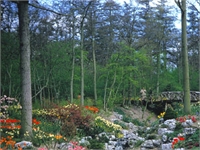
Useful Shade Garden Tips
Important Notice: Our web hosting provider recently started charging us for additional visits, which was unexpected. In response, we're seeking donations. Depending on the situation, we may explore different monetization options for our Community and Expert Contributors. It's crucial to provide more returns for their expertise and offer more Expert Validated Answers or AI Validated Answers. Learn more about our hosting issue here.

Useful Shade Garden Tips
You must be logged in to post a comment.
Shade gardening poses a variety of challenges, with limited sunlight being only one. To successfully garden in a shady area, you should consider a few other factors that contribute to the problems you will face. Instead of fighting the shade and trying to force plants that will not survive, learn how to work within the shaded area. Work with what you have by following these tips, and you can successfully landscape your shade garden for low-maintenance enjoyment.
Determine the Source and Amount of Shade
Watch your garden at various times of the day to determine what is causing the shade. Watch your garden during various times of the day. Make a note of when the area receives sun. Then determine how much sunlight the area receives.
Check the Condition of the Soil
Depending on the source of the shade, the condition of the soil will vary.
Alternatives to Plantings
When all else fails, consider using the area as a place for entertaining, playing or storage. Create a space for a table or bench to sit and relax, create a child’s oasis with a play set, or set up a shed for gardening tools. Add a decorative fountain or sculpture, or create a place for our feathered friends to flock with a collection of birdhouses, a birdbath and a few feeders. Use the space to your best advantage and enjoy the shade it offers.
Enjoy Your Shaded Area
Once you determine how much sun your shade garden receives, when it receives that sun, what the soil conditions and drainage conditions are, gardening in the shade will be much simpler. By choosing the appropriate annuals, perennials, groundcovers, trees, shrubs and potted plants that are suitable to the specific conditions your shade garden, you can create a beautiful garden setting that benefits from the conditions presented.